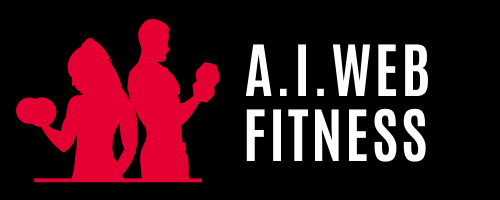12 Proven Strategies for Mastering Fitness Branding: The Ultimate Guide for Personal Trainers
Index
- Introduction
- Understanding Your Target Audience
- Crafting Your Unique Selling Proposition (USP)
- Visual Identity and Brand Aesthetics
- Leveraging Social Media
- The Role of Content Marketing
- Client Testimonials and Social Proof
- Email Marketing and Customer Retention
- Search Engine Optimization (SEO)
- Monitoring and Analytics
- Legal Considerations and Compliance
- Community Engagement and Partnerships
- Sustainability and Environmental Responsibility
- Conclusion
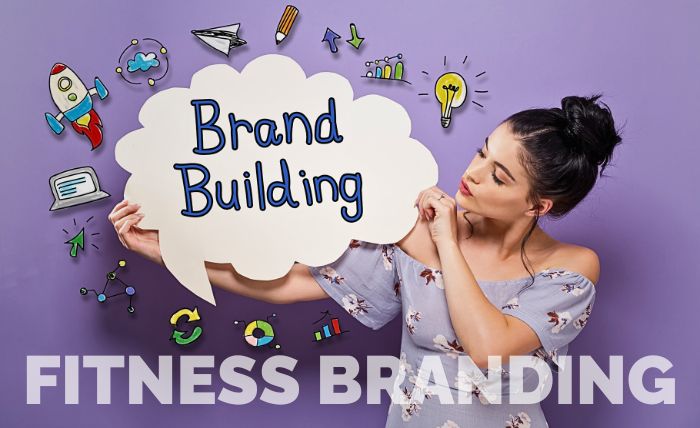
Introduction
Why Branding Matters in the Fitness Industry
In today’s world, there are many fitness options. That’s why fitness branding is key. We made this guide to help you build a strong fitness brand. This guide has all you need. It talks about your target crowd and your fitness brand identity. But we offer more.
We also dive into the role of social media in building a fitness brand. Good content is also key for branding. Plus, we talk about how good reviews can boost your brand’s trust.
Emails are a great tool for branding too. They keep your crowd engaged. And, we can’t forget about making your brand easy to find online. That’s part of how to build a fitness brand that lasts.
So, if you’re new or want to make your brand better, this guide is for you. It gives you seven good ways for building a fitness brand that connects with the right people and lasts a long time. Keep reading for tips you can use right now to stand out.
Key Statistics:
- Over the past two years, the share of consumers who said influencers or celebrities were important to brand discovery rose by nearly 20 percent. Source: McKinsey
- Fitness, education, and healthcare sectors see a significantly higher conversion rate on social media platforms like Facebook.
Source: Sprout Social - Of the total revenue generated by the fitness industry in the United States, nearly $20 billion consisted of direct value added to the economy.
Source: Statista
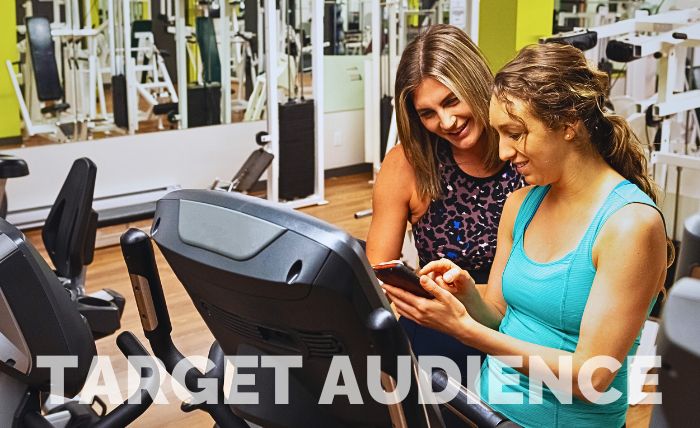
1.Understanding Your Target Audience in Fitness Branding
If you’re in the fitness business, knowing who you’re selling to is key. This quick guide will help you figure out who your customers are to make your fitness brand stronger.
Why It’s Important
Understanding your customers helps you market better and use your resources wisely. Experts say this is really important, especially for fitness brands.
How to Find Your Target Fitness Clients?
- Know Your Fitness Clients: First, find out who your fitness clients are. Look at who’s already using your services to shape your fitness brand identity.
- Do Your Homework: Before you build a fitness brand, know what your clients want. Use surveys or social media to gather info. This helps you make a brand that fits your clients’ needs.
- Check Out Other Brands: See what other fitness brands are up to. This helps you avoid mistakes and gives you an edge in the market.
- Create Client Profiles: Use the data you’ve gathered to make profiles for different client types. Are they new to fitness or seasoned athletes? This info helps you fine-tune your brand.
- Know Who You’re Not For: While building your fitness brand, know who you’re not targeting. This makes your marketing more effective.
- Keep Your Brand Fresh: The world of fitness is always changing. Keep your brand up to date to stay relevant.
- Use Data Tools: Google Analytics and other tools can show you how people interact with your brand online. Use this data to improve your brand.
Things to Think About
- Data’s Role: Tools like Google Analytics can make your brand stronger.
- Learn from Others: See what other brands are doing to get ideas for your own.
- Client Profiles Matter: Knowing your clients helps you make a brand that really fits.
Market Segmentation
Segmenting your audience allows for targeted marketing. Types of segmentation include:
- Demographic: Age, gender, income.
- Psychographic: Lifestyle, values.
- Geographic: Location-based targeting.
- Behavioral: Spending habits.
Simple Questions for Your Fitness Branding Strategy
- Who are you targeting with your fitness brand? What age and gender?
- Where do most of your ideal customers live?
- What jobs do your potential customers usually have?
- What hobbies do your ideal customers enjoy?
- What’s the general mood or mindset of your target market?
- How do they like to get information or news?
- What problems do your ideal customers often face?
- Who usually decides to buy your product or service?
- What makes this person decide to buy?
- Have they bought from your competitors before?
- What worries your potential customers?
- What’s most important to your ideal customers?
- Who do decision-makers listen to for advice?
- How does your fitness brand make life better for your customers?
- What do your ideal customers like to do for fun?
- What websites or apps do they often use?
- What kind of online stuff catches their attention?
- Where do they usually start when they want to buy something?
- What charities or causes do they support?
- What stores do they like to shop at?
This list should help you gain a comprehensive understanding of your target audience, thereby enabling you to craft more effective and personalized marketing strategies.
Effective Channels
The guide “Mastering the Fitness Industry” highlights that using the right channels is key. Social media, emails, and SEO are great ways to reach the people you want to attract.
Knowing who you’re trying to reach is the foundation of good fitness branding. Whether it’s smart marketing or where to put your resources, understanding your audience can really shape your fitness brand.
FAQ
Knowing your audience helps you target your marketing better and use your money and time more wisely.
You can figure out who your customers are by doing some market research and looking closely at who’s buying from you.
This means breaking down your larger audience into smaller groups that are easier to focus on.

2.Crafting Your Unique Selling Proposition (USP) for Building a Fitness Brand
Are you looking to make your fitness brand stand out from the crowd? A strong Unique Selling Proposition (USP) is your answer. This guide will walk you through why a USP is crucial for your fitness brand identity and how to create one that resonates with your audience.
Why a Solid USP is Key in Fitness Branding
In the world of fitness, there’s a lot of competition. A USP isn’t just a catchy phrase; it’s the core of your branding. It’s what sets you apart and helps you attract the clients you’re looking for.
Without a strong USP, you risk blending in with countless other fitness options out there.
What is a USP and Why It Matters
So, what’s a USP? It’s the unique feature or benefit that makes your fitness brand special. It’s the reason people should choose your services over others.
A well-crafted USP not only helps you get new clients but also keeps current clients loyal to your brand.
Step-by-Step: How to Build a Fitness Brand USP?
Identify Your Unique Features
- First, list what sets your fitness brand apart. Maybe you offer specialized equipment, custom workout plans, or perhaps you have classes that no one else offers.
Understand Your Audience
- Knowing your audience is key. What are their needs and wants? What problems are they looking to solve? Understanding this helps you tailor your USP to what your audience actually cares about.
Study Your Competitors
- Take a look at what other fitness brands offer. Identify what they’re missing and how you can fill that gap. This is your opportunity to offer something they don’t.
Create Your USP
- Combine your unique features, your audience’s needs, and the gaps in the market to craft your USP. Make it clear, make it compelling, and make sure it speaks to your audience.
Once you’ve nailed down your USP, it’s time to put it to work. Feature it prominently in all your marketing materials. Whether it’s social media, your website, or flyers, your USP should be front and center.
This helps you build a strong fitness brand identity and encourages more people to choose your services.
Real Examples of Great USPs
Here are some USPs that have proven effective in the fitness industry:
- “Get Fit in 30 Days or Your Money Back”
- “The Only Gym with a Personal Nutritionist for Every Member“
Creating a strong USP is essential for anyone looking to make their mark in the fitness industry. It forms the foundation of your fitness branding and plays a huge role in attracting and retaining clients.
By following these steps, you’ll be well on your way to crafting a USP that sets you apart.
FAQ
A USP is what makes your fitness brand unique. It’s your special edge in a crowded market.
A strong USP helps you stand out and attract the clients you want.
To create a USP, identify what makes you unique, understand your audience, study your competitors, and then craft your message.
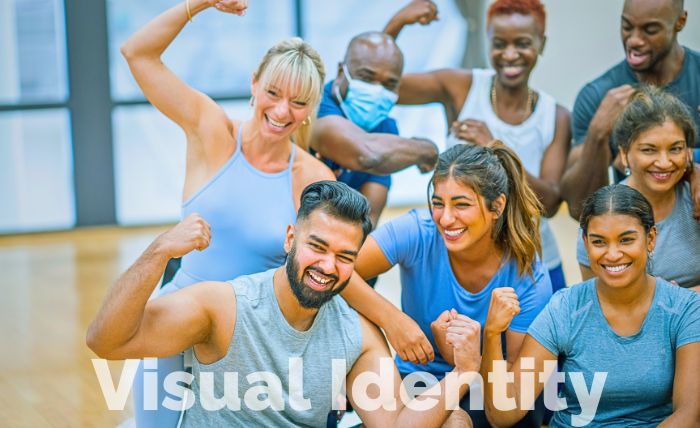
3.Boost Your Fitness Branding with Visual Identity and Aesthetics
Want your fitness brand to stand out? A strong visual identity is the key. This guide, enriched with industry insights, will help you make your brand unforgettable.
Why Looks Matter in Building a Fitness Brand?
Your logo is just the beginning. The colors, fonts, and images you choose shape your fitness brand’s identity. For instance, bright colors can make your brand memorable.
According to brand aesthetics research, the psychology of color significantly influences how consumers perceive your brand.
What Makes a Fitness Brand
Building a fitness brand is more than just visuals. It’s about your mission, values, and the experience you offer. As suggested by HubSpot, creating a “brand promise” encapsulates what customers can expect from you, setting you apart from competitors.
Why We Pick Certain Looks
Visual choices are influenced by culture and history, not just personal preference. Visual identity essentials recommend considering the emotional impact of your visual elements, as they can evoke feelings like trust or excitement.
Make a Great Logo
Your logo is your brand’s face and should capture your gym or fitness center’s essence. For a logo that’s both simple and versatile, Trainerize advises making it adaptable for various uses, from social media to merchandise.
Questions to Ask About Your Brand
When building your fitness brand identity, consider:
- What emotions do you want to evoke?
- What colors align with your brand?
For a deeper dive, Lean Labs suggests also considering the tone of voice you’ll use in your messaging, which can be equally impactful.
Why Strong Looks Are Key
In a crowded market, a unique visual identity sets you apart. Consistency is crucial, as it helps build trust and recognition over time.
Quick Tips for Better Fitness Branding
- Colors: Choose ones that resonate with your audience. Warm colors can evoke excitement, while cool colors can convey trust.
- Fonts: Opt for easy-to-read styles that align with your brand’s tone.
- Images: Use high-quality photos that align with your message. Authentic images can help humanize your brand.
- Consistency: Ensure your visuals are uniform across all platforms. Consistency builds trust and makes your brand more recognizable.
Visual identity plays a big role in branding. From your logo to your color choices, every detail should align with your brand and resonate with your audience.
By following these expert tips, you can create a brand that not only stands out but also stands the test of time.
FAQ
Visual style is how your brand looks. It includes the colors, fonts, and pictures you use. It’s not just about looking good. It also helps people understand what your brand is about. A good visual style makes it easier for people to remember your brand.
Having a strong look is key, especially in the fitness world. It’s often the first thing people notice about your brand. A good look can make people trust you more. It can also make your brand stick in their minds.
To make your brand look better, think about who you want to reach. Pick colors and fonts that they will like and that fit your brand. Use high-quality pictures that go well with your message. Make sure to keep the same look across all places where people can see your brand.
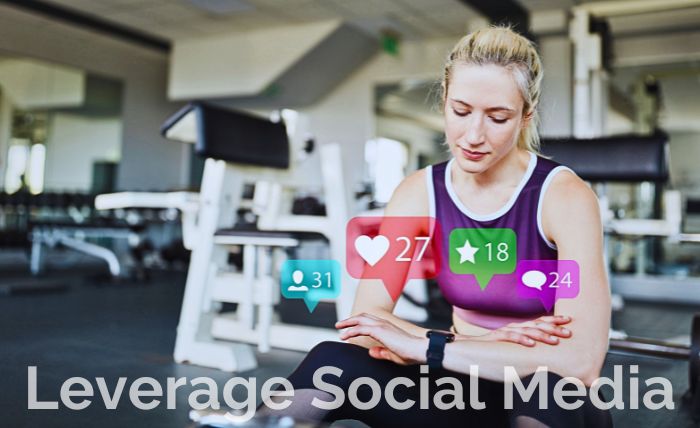
4.Leveraging Social Media: A Game-Changer in Branding Strategy
If you’re in the fitness world, you can’t ignore social media. It’s a serious tool that can help your fitness brand grow.
Why Social Media Matters?
Some folks think social media is just a time-killer. But that’s not true. LinkedIn research shows that social media can help you keep your current clients happy while finding new ones.
It’s a win-win for your fitness brand identity.
Building a Good Reputation
Social media isn’t just about selfies and food pics. It’s a way to show the world what your fitness brand stands for. Gleantap tells us that a good online reputation is key to building a fitness brand.
So, make sure you’re showing your best side.
Best Ways to Use Social Media
Want to know how to make social media work for you?
Grin has some tips:
- Share Good Content: Don’t just post for the sake of posting. Share things that your audience will find useful or interesting.
- Get Your Clients to Help: Your happy clients are your best advertisers. Ask them to share their success stories.
- Work with Influencers: Find fitness experts who are big on social media. A shoutout from them can bring in lots of new followers.
- Make It Fun: Use quizzes and polls to get people talking. The more they talk, the more they’ll share.
- Special Offers: Everyone loves a good deal. Use time-limited offers to get people to take action.
Social Media for Gyms and Trainers
Whether you own a gym or work as a personal trainer, social media is your friend. TeamUp and ISSA both say that social media can help you reach more people and offer more services.
It’s like having a marketing team, but cheaper.
What Social Media Can Do for Your Fitness Branding?
You might be wondering what exactly social media can do for you.
Well, it can:
- Get You Known: The more you post, the more people will know who you are.
- Keep People Interested: Regular updates keep your audience engaged. They’ll want to see what you do next.
- Find New Clients: You can use targeted ads to find people who are looking for exactly what you offer.
In short, social media is a must-have for building a fitness brand. It can help you build a strong reputation, keep your clients happy, and find new ones. So, don’t miss out. Use the tips to make social media work for you.
FAQ
Yes, it does. Social media helps you talk to your current clients and find new ones. You can post workout tips, special offers, and more. This helps people get to know your fitness brand better.
To make your fitness brand stand out, share useful tips and how-tos. Ask happy clients to post their own stories. You can also team up with fitness pros on social media. This helps you reach more people.
Social media helps in many ways. You can show off what makes your brand special and keep people interested with regular updates. You can also use ads to find new clients who are looking for what you offer.
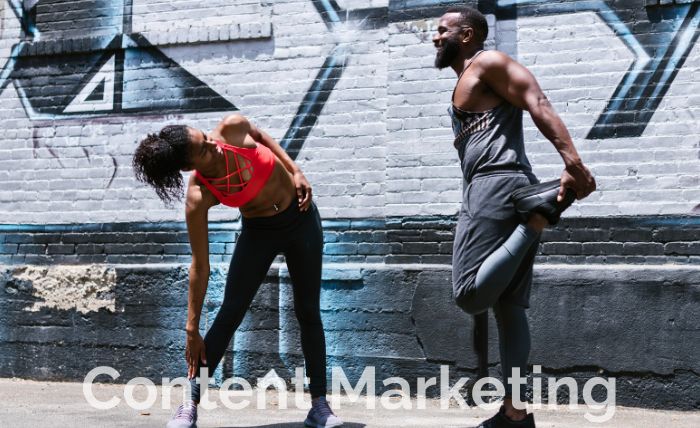
5.The Role of Content Marketing: A Giant Step Forward to Your Fitness Branding Strategy
Content marketing isn’t just a buzzword. It’s a powerful tool for building a fitness brand. Content marketing can elevate your branding efforts.
Reaching Your Target Audience
One of the best things about content marketing is that it lets you talk directly to the people you want to reach. According to an article from Omnify, this strategy is great for finding new clients and keeping the ones you already have.
By sharing useful tips and the latest trends in fitness, you can make your brand more popular and trusted.
Building Your Fitness Brand Identity
Content marketing is more than just creating articles or videos. It’s about shaping how people see your brand. An article on LinkedIn suggests that guest blogging on fitness topics can introduce your brand to a wider audience.
This is a crucial part of how to build a fitness brand that people will remember.
Knowing What Works
To make your content marketing effective, you need to know what your audience likes and dislikes. An article from Creatitive emphasizes the importance of analyzing metrics like page views and engagement rates.
This helps you adjust your strategy to what really works.
Attract, Engage, Convert
Content marketing is a multi-tool in your branding toolbox. According to Wellness Creatives, it can help you attract new clients, keep them engaged with useful and interesting content, and eventually convert them into loyal customers.
Developing a Content Strategy
A well-planned content strategy can make your efforts more effective. Educate Fitness suggests considering the following:
- Types of Content: Think about using a mix of blogs, videos, and podcasts.
- Content Calendar: Plan your posts in advance to keep your content consistent.
- Audience Segmentation: Tailor your content to different groups of people for better engagement.
- Performance Metrics: Keep an eye on key performance indicators (KPIs) to measure your success.
Real-World Example: 9Round
A case study from Adobe highlights how the fitness brand 9Round uses monthly email newsletters to keep its members engaged.
This not only keeps members coming back but also strengthens brand loyalty.
Content marketing plays a vital role in building a fitness brand. It helps you reach your target audience, build a strong brand identity, and convert leads into loyal customers.
By following the tips and strategies outlined, you can make your efforts more effective and impactful.
FAQ
Content marketing in fitness branding is all about sharing useful information to attract new clients and keep current ones. It’s a way to show your expertise and make your brand more trusted.
Content marketing helps shape how people see your brand. By sharing the right kind of content and collaborating with other experts, you can make your brand more memorable and trusted.
To make a good content plan, think about what types of content to share, when to share it, and who you want to reach. Also, keep an eye on how well your content is doing to know what to adjust.

6.The Power of Client Testimonials and Social Proof in Building a Fitness Brand
Why Testimonials Matter?
What your clients say about you is super important. When people looking to get fit see good reviews, they’re more likely to trust and choose your brand.
A study shows that when customers read reviews, they’re 58% more likely to buy something. You can read more about this on Wyzowl.
Social Proof in Fitness
When you’re competing with other fitness brands, having your clients talk about how great you are can really help. This kind of proof that people like what you offer makes new customers feel more confident in choosing you.
There’s a good article on PFC Academy that explains why this is so crucial.
Testimonials in Emails
Did you know you can use client testimonials in your email marketing too? It’s a smart way to show off good reviews and get more sales.
There’s a guide with examples on Drip that shows how to do this well.
Building Your Brand Image
Positive testimonials do more than just attract new clients; they shape how people see your brand. They can make your fitness brand look really good and trustworthy.
For tips on using testimonials to improve your brand, check out Debutify.
Benefits for Business Owners
If you own a fitness business, good client testimonials can:
- Make your brand look more credible.
- Help new clients trust you.
- Increase your sales.
You can find more about these benefits on Trainerize.
Having a Testimonials Page
It’s a great idea to have a page on your website just for client testimonials. This page is where you can show off all the good things clients say about you.
It can really help new customers decide to choose your services.
Client testimonials and social proof aren’t just nice to have; they’re a must in fitness branding. They make your brand more credible and can lead to more sales.
Using them wisely in your marketing can really help your brand grow.
FAQ
Testimonials show that people like your fitness services. They tell new customers that you’re good at what you do.
You can put good reviews in your emails. This helps show others that your fitness brand is trusted and liked.
Yes, it’s good to have a page for client reviews. This page shows new visitors that many people are happy with your fitness services.

7.Unlocking the Potential of Email Marketing and Customer Retention
In the fitness industry, standing out is key. Email marketing and keeping customers are big parts of a winning brand identity strategy.
Here are some tips on how to make your fitness brand stronger.
Email Marketing: A Key to Fitness Brand Identity
Email marketing is a must for fitness brands. It lets you send great emails to your audience. This keeps customers interested and boosts sales and brand awareness.
For fitness brands, it’s about sharing useful and exciting content, not just selling. Glofox explains this well.
Customer Retention: More Than a One-Time Thing
For a strong fitness brand, you need to keep customers coming back. It’s all about staying in touch and keeping them interested. Myemma talks about how important this is in fitness email marketing.
The Many Benefits of Email Marketing
Email marketing does a lot. It helps with sales, getting new customers, making your brand known, and keeping customers loyal.
It’s a big part of building a fitness brand. Arcalea shares more on this.
Using Customer Segmentation to Build Loyalty
Knowing your audience is key in email marketing. When you know who they are, you can send messages that really speak to them.
This makes them more loyal to your brand. Perfect Gym has great tips on this.
Email Marketing Ideas
Here are some email ideas to boost your brand identity:
- Welcome Emails: Say hello to new members.
- Deals: Offer special discounts.
- Success Stories: Share client wins to inspire others.
Customer-First Strategy
Make your marketing about the customer. This makes them more loyal and happy. Ezfacility suggests this can turn customers into fans of your brand.
Email marketing and keeping customers are key in branding. They help get and keep a loyal customer base. Use these tips to make your fitness brand better.
FAQ
Email marketing is key for reaching out and keeping customers engaged. It helps in increasing sales and nurturing a loyal community around your brand.
Customer retention is about keeping your audience interested and connected to your brand. It ensures ongoing engagement and loyalty, which are vital for business growth.
Segmenting your email list means sending more relevant, personalized messages. This approach makes each customer feel valued, boosting their loyalty to your brand.
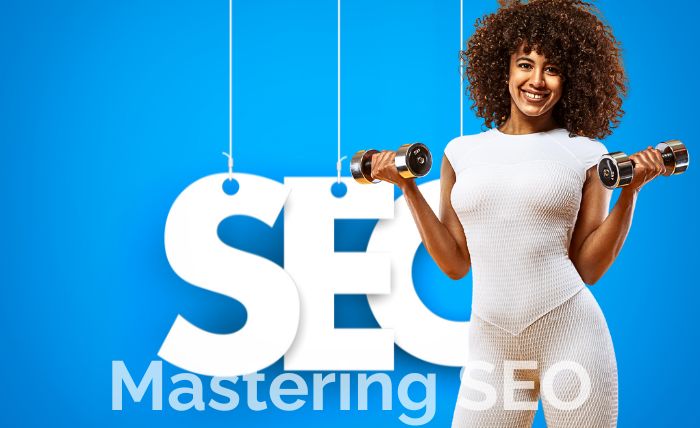
8.Mastering SEO: The Working Guide
SEO (Search Engine Optimization) is vital for enhancing a fitness brand’s online presence. This guide offers insights into using SEO to boost your fitness brand, with practical tips and strategies.
Local SEO: Strengthening Fitness Brand Identity
Local SEO is key to developing a strong fitness brand identity. It helps your brand appear in local search results, making it easier for potential clients in your area to find you.
For detailed strategies, including optimizing your Google My Business listing and garnering local reviews, check out Top 6 Local SEO Strategies for Gyms and Fitness Centers.
Keywords: Building a Fitness Brand
Choosing the right SEO keywords is crucial in building a fitness brand. These keywords help you appear in relevant search results, increasing your online visibility.
For guidance on selecting effective keywords and understanding user intent, visit SEO Keywords for Gyms.
SEO: Core of Fitness Marketing
SEO is a fundamental part of fitness marketing. It not only drives web traffic but also helps in converting visitors into clients. Effective SEO involves regularly updating website content and ensuring it’s relevant to your target audience.
Gain more insights from SEO for Gyms.
Crafting an SEO Strategy
A well-thought-out SEO strategy is essential. Key aspects include:
- On-Page SEO: Focus on optimizing meta descriptions, titles, and using high-quality, relevant content.
- Off-Page SEO: Build backlinks and engage in guest blogging.
- Technical SEO: Ensure fast loading times and a mobile-friendly website.
For a step-by-step guide, including using keywords in your content and understanding the importance of backlinks, read Fitness Marketing for Business Leaders.
Keyword Strategy for Success
Effective keywords are vital for your online presence. Google Keyword Planner and other tools can help identify the best keywords for your brand.
For advanced tactics, like using long-tail keywords, refer to Keywords for Health and Fitness.
Additional Online Marketing Tips
Enhance your online marketing with these additional SEO strategies:
- Content Marketing: Develop engaging, original content that addresses your audience’s needs.
- Social Media: Utilize social media channels to amplify your content and engage with your audience.
- Analytics: Regularly monitor your SEO performance to understand what works and what needs improvement.
SEO is a game-changer for fitness brands. From local SEO to a comprehensive keyword strategy, these methods can significantly elevate your brand’s online profile.
A robust, well-executed SEO strategy is key to digital success in the fitness industry.
FAQ
SEO boosts your brand’s visibility on the internet. This makes it easier for more people to find and learn about your fitness services.
Keywords help your brand show up in the right online searches. They connect your brand with users looking for fitness services like yours.
Start by focusing on improving your website’s content, structure, and links. Then, use the right keywords to match what your potential clients are searching for.

9.Mastering Monitoring and Analytics
Fitness branding goes beyond the surface—it’s about crafting a story that resonates with your audience. To tell that story effectively, you need to pay attention to the details. Monitoring and analytics are your best tools for this.
Let’s break down their role and how they can elevate your brand.
ROI: Your Financial Compass
Think of ROI, or return on investment, as your financial compass. It points you to the marketing strategies that are worth your dollars.
For instance, Gleantap suggests using targeted social media ads to reach the right audience, which can improve your ROI.
Customer Insights: The Heart of Your Strategy
Analytics give you a peek into your customers’ world. They show you what your audience loves and what doesn’t click with them.
Indeed’s marketing strategies recommend engaging with customers through social media polls and feedback forms to better understand their needs.
Sharpen Your Campaigns with Data
Data is your secret weapon to sharpen your marketing campaigns. It tells you what’s working and what’s not.
For example, as the Fitness Marketing Guide points out, tracking engagement rates can help you create more compelling content that resonates with your audience.
KPIs: The Scoreboard of Success
KPIs are like a scoreboard for your brand’s performance. They help you track progress and set benchmarks.
When building a fitness brand, focus on KPIs like member acquisition costs and average revenue per user, as these can indicate the health of your business growth.
Stand Out with Competitive Analysis
Understanding your competition is crucial. It helps you find your unique angle. Martech’s brand strategy emphasizes the importance of differentiating your brand through unique selling propositions (USPs) that set you apart.
In essence, monitoring and analytics are the backbone of how to build a fitness brand. They’re not just about numbers; they’re about shaping a brand that’s engaging, profitable, and ahead of the curve.
FAQ
They tell you what’s working in your marketing. This helps you make better plans to attract and keep customers.
Keep an eye on your web traffic and how people engage with your content. Also, track how much you spend to get new customers.
It shows you what others in your field are doing. You can use this to make your brand stand out.
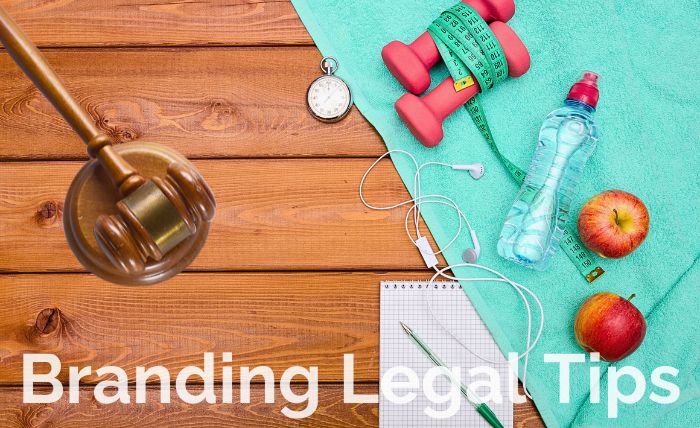
10. Legal Tips for a Trustworthy Brand
Building a fitness brand? Remember, it’s not just about eye-catching designs or catchy slogans. It’s also about staying true to the law.
Here’s how you can keep your branding both appealing and law-abiding.
Honest Marketing is Key
Truthful marketing isn’t just good ethics; it’s the law. Misleading ads can lead to fines and a tarnished reputation.
For insights into keeping your marketing above board, Entrepreneur’s article on marketing compliance is a must-read.
Truth in Online Advertising
The FTC is strict about online ads. They must be honest and clear to protect consumers.
For a deep dive into these regulations, the FTC’s guidelines are a comprehensive resource.
Crafting Compliant Wellness Programs
Creating a wellness program involves navigating privacy laws and ensuring equal access. LexisNexis offers a detailed guide on wellness program compliance, which can help you design programs that respect both individual rights and legal standards.
Substantiate Health Claims
Any health benefit your brand claims must be backed by solid evidence. This not only builds trust but also aligns with the FTC’s standards.
Their health products compliance guidance provides clear directions on how to substantiate your claims properly.
Understanding Legal Nuances
Knowing the law isn’t just about ticking boxes. It’s about understanding the nuances to mitigate risks.
Diligent’s blog on evaluating legal compliance offers steps to navigate the complex legal landscape effectively.
FAQ
Legal compliance in marketing safeguards your brand’s reputation and avoids costly penalties. It’s essential for building long-term trust with your audience.
Wellness programs must protect participant privacy and ensure all activities are fair and inclusive. Adhering to these legal aspects helps prevent discrimination and maintains confidentiality.
Health claims should be supported by scientific research to meet FTC guidelines. This approach not only ensures compliance but also reinforces the credibility of your fitness brand.

11.Building a Fitness Brand with Community and Partnerships
Building a strong fitness brand? It’s all about community and working together.
Here’s how to make it happen.
Get the Community Wheel Turning
A “Community Flywheel” means getting people excited and involved. McKinsey shows how brands that connect with people online can really take off.
They suggest fun online events that get everyone moving and talking about your brand. Read more about it.
Team Up for Bigger Impact
When you join forces with local groups, you do more good. NCBI says this can mean anything from health fairs to youth sports sponsorships. It’s all about making a splash in the community.
Learn how to make these partnerships work.
Make Long-Term Friends
Long-term partnerships mean everyone feels they have a stake in the success. Granicus talks about how these deep ties help your brand become a trusted part of the community.
Find out more about building these relationships.
Pick the Right Partners
The Urban Institute tells us to look for partners who really get what your brand is about. Like a local market that’s all about healthy living, just like you.
They have a guide to help you choose.
Get People Talking and Doing
Thinkific has lots of ideas to get people involved. Maybe start a program where your fans can show off how they stay fit and healthy with your brand.
Or give special online classes just for your community. Check out their tips.
Design with Everyone in Mind
NCBI says if you let people help design your health programs, they’ll work better for everyone. It’s about making sure what you offer fits what people need.
Read their advice on how to do this.
By using these tips, your fitness brand can really be a part of the community.
FAQ
Community engagement turns customers into loyal supporters. They help spread the word, growing your brand naturally.
Look for partners who share your brand’s values and goals. A good partnership should feel like a natural fit for both of you.
Use social media to get feedback and host events to bring people together. Encourage your community to share their fitness stories online.

12.Elevating Fitness Branding Through Sustainability and Environmental Responsibility
In the fitness industry, being eco-friendly is now a must for any brand that wants to stay relevant.
This piece will talk about why being sustainable is so important for fitness branding and give you tips on how to do it.
The Growing Trend of Sustainability
Sustainability is becoming a big deal in fitness. Leaders in the field are taking steps to be more eco-friendly. This is not just good for the earth; it also attracts customers who care about the planet.
You can read more about this trend on IDEA Health & Fitness Association’s website.
Green Gyms: A New Clientele
Eco-friendly gyms are now a thing. They draw in people who want to keep fit and be kind to the earth at the same time.
Places like Life Time are making changes to be greener, and you can learn more about this from The Washington Post.
Sustainability: Good for Planet, Good for Business
Going green can save you money in the long run and make your brand look good. The Green Business Bureau has a guide that explains how this works.
Corporate Social Responsibility and Brand Image
When a company cares about its impact on the environment, people notice. This can make your brand stand out.
IHRSA talks about how this can help your business in the long term.
Practical Tips for Sustainable Fitness
If you want to make your fitness brand greener, here are some simple steps:
- Energy-Efficient Equipment: Choose machines that use less power. Life Fitness is one brand that focuses on this.
- Recycling Programs: Start recycling at your gym. It’s an easy way to help the environment.
- Eco-Friendly Cleaning Products: Use cleaners that won’t harm the earth.
Standing Out in a Crowded Market
Being sustainable can make your fitness brand really stand out. It shows you care about more than just profits.
By focusing on sustainability, you’re not just following a trend. You’re building a brand that will be loved for its care for the planet.
FAQ
Sustainability sets your brand apart as forward-thinking and responsible. It appeals to customers who prioritize environmental health alongside their own fitness goals.
Using energy-saving equipment and promoting recycling are key steps. These actions show your commitment to the planet and can also reduce operational costs.
Adopting green practices can boost your reputation, making your brand more attractive. It signals to customers that your business cares about the community and the environment.
Conclusion: The Holistic Approach to Building a Robust Fitness Brand
Building a standout fitness brand today means doing more than just great workouts. This series has shown that a strong brand needs many parts to work.
- Know Your Audience: When you know who you’re talking to, you can make sure your services and ads hit the mark.
- Find Your Edge: In a busy market, you need to show what makes you different. This is what draws in the people you want.
- Look the Part: A good look sticks in people’s minds and shows what you’re about.
- Use Social Media: It’s a powerhouse for getting noticed, chatting with customers, and finding new leads.
- Content is Key: Great content sets you up as the go-to expert and pulls in new faces.
- Real Reviews Matter: Good words from clients make others trust you and want to join.
- Emails Keep Them Close: Emails are great for bringing in new people and keeping them around.
- Be Seen Online: Good SEO makes you easier to find, which means more people come to your site.
- Check the Numbers: Knowing your data helps you make your marketing even better.
- Stay Legal: Keeping your marketing legal means no trouble down the road.
- Get Involved: Being part of the community and teaming up with others makes your brand stronger.
- Go Green: Being eco-friendly is a big plus and can bring in people who care about the planet.
When you mix all these together, you’re not just running a business; you’re building a brand that lasts. Each part works with the others to make a full plan that not only gets customers but keeps them.
This way, your brand does well, is well-liked, and is ready for anything.
